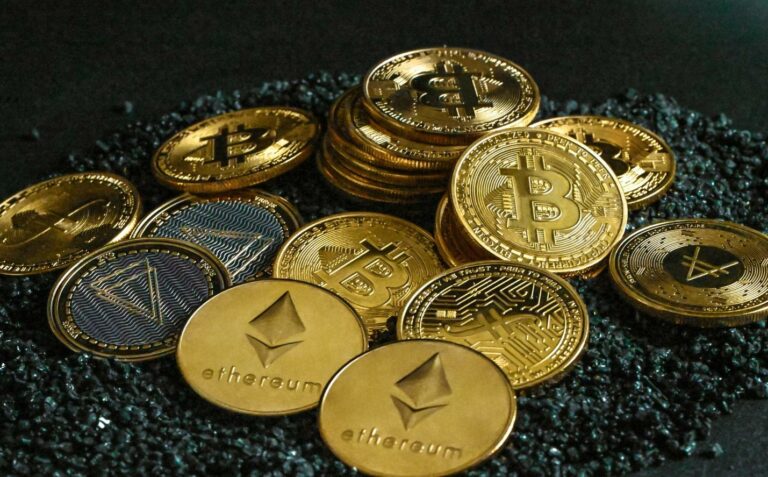The majority of cryptocurrencies are only financial instruments people can use to pay for different products and services. However, Render offers more of this, which is why this digital currency has a bigger chance of gaining more popularity in the future. Render is the native token of the Render Network, an innovative platform that offers GPU-based rendering solutions. The idea of Render was first considered by Jules Urbach, the CEO of OTOY, who has a revolutionary vision of using blockchain technology to improve graphics rendering.
He also wanted to make the access to GPU power more democratic, as this would allow creators to streamline the process of rendering images better than in traditional methods. The Render token has a crucial role in the Render network, which creates more demand for this digital currency. A bigger demand could also mean an increase in the Render price.
In this article, we will discover more about Render’s features, so keep reading to learn more.
What exactly is the Render Network?
Thanks to blockchain, the Render Network has offered improved solutions for rendering processes. This platform employs the best industry software from OTOY Inc. to provide an amazing platform and create the best marketplace for GPU processing. This occurs because, on this platform, the network can connect users looking for render jobs with those who want to idle GPUs. In exchange for performing renders, they will receive RNDR tokens. Thanks to this feature, they have the best infrastructure for computer-intensive render jobs and rapid scaling.
Because of this, the Render network is one of the best rendering platforms. As a result, it is used for numerous purposes, such as gaming, artificial intelligence, or augmented reality. Today, digital creation is growing at a rapid speed, and users want to benefit from cost-effective and efficient solutions they can use. This is why the Render network is a game changer in the rendering processes.
How does the Render Network work?
Render Network is a good example of a platform with a simple interface and technological sophistication. On the Render network, users upload their available projects, and then the platform distributes the GPUs to optimize the project allocation.
After being assigned to a GPU, it also goes through a validation phase, which is known as ” Proof of Render.” Thanks to this validation phase, all users are sure of the quality and integrity of the output. Plus, this validation process is very similar to the one used for other digital coins. If the rendering process is successful, all the hardware providers will receive rewards in the form of RNDR tokens. In this way, the Render Network fosters a mutually beneficial ecosystem.
A better look at the RNDR tokenomics
One of the most important features of the Render network is its digital coin, the RNDR token. This digital coin, an ERC-20 token developed on the Ethereum platform, is an important instrument in the evolution of decentralized rendering services. This happens because the RNDR token plays an important role in the transactions from this rendering economy.
Other than this, the RNDR tokens also have a primordial role in the governance mechanism and the reward system. In this regard, the GPU providers receive these tokens as compensation, where the amount depends on factors like duration, job level, or complexity. Other than this, the RNDR tokens offer users the possibility to participate in the decision-making on the platform through Render Network Proposals (RNPs). In this way, they will have a say in the direction of the network.
What exactly is the structure of the Render network?
The main structure of the Render network is composed of three important pillars, which ensure the platform’s quality, efficiency, and sustainability. These are the three main components:
- The creators of the platforms
Creators have a very important role in the evolution of the Render Network, as they are the driving force that keeps this ecosystem working. These creators can range from content creators to digital artists, and they are necessary for the platform because they upload their projects to the network for rendering processes. Thanks to the Render network, they will pay less compared with traditional alternatives, as they have global access to GPU power.
One of the best advantages of this platform is that it allows creators to benefit from amazing rendering methods without needing to invest in high-end hardware. This allows all people a more democratic access to all computational resources and be part of an amazing community that can inspire all creators.
- Node operators
Along with creators, node operators are important components in the structure of the Render network, as they offer their spare GPU resources for rent. This platform allows them to monetize their unused computing power, which can represent an important advantage. For their contribution, the node operators receive rewards in the form of RNDR tokens.
- OctaneRender
OctaneRender is also a crucial component of the Render network, representing a rendering engine. It ensures quality on this platform so that the rendering process has the best result according to industry standards. Thanks to this engine, creators have more trust, and they are attracted to participate more in this network. Additionally, because it uses enhanced rendering capabilities and a sophisticated algorithm, OctaneRender can boost the platform’s reputation and attract even more participants to this space.
Conclusion
The Render Network has proved to be the best platform for a decentralized GPU rendering solution. Thanks to its existence, traditional rendering methods have significantly improved and will continue to enhance in the future as well. The Render Network uses blockchain technology to revolutionize graphics rendering, thus allowing more creators to take advantage of these improved means of rendering images.
Creators, OctaneRender, and node operators are the collaborative forces behind the Render network. They all have an essential role and can catapult the Render network into the mainstream.
For more articles, visit our blog.

